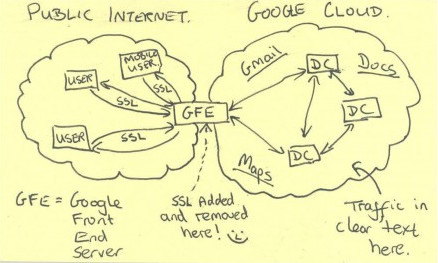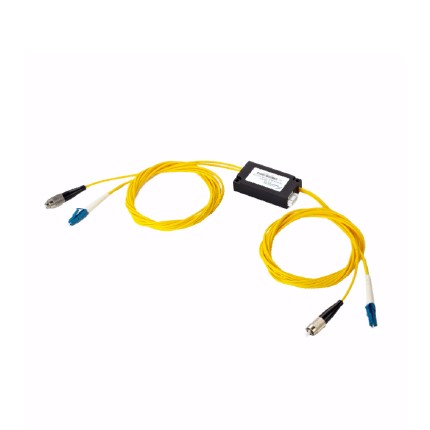In October, a report surfaced that the US National Security Agency secretly accessed data from tech giants like Google and Yahoo, by way of intercepting the unencrypted traffic flowing between each company’s data centers.
Specifically, it’s believed the NSA tapped into the fiber-optic cables that connect those data centers. The New York Times reported Tuesday that these cables, which aren’t owned by the Internet companies, are easy targets for interception. The largest such fiber-optic cable provider — an under the radar Denver-based firm called Level 3 — may have had something to do with the government’s infiltration tactics. “Fingers have been pointed” at Level 3, reported the Times, citing three unnamed sources. Read more
Archive for May 2013
Fiber-optic cables could be the key to NSA snooping
SYOPTEK's Full Cost-effective Fiber Optic Cleaning Products

Industry reports show that CONTAMINATION is the No.1 source of troubleshooting in optical networks, any contamination in the fiber connection can cause failure of the connectors or failure of the whole system.
Clean fiber optic connectors are a requirement for quality connections between fiber optic equipment. One of the most basic and important procedures for the maintenance of fiber optic systems is to clean the fiber optic equipment.
Always follow the “INSPECT BEFORE YOU CONNECT” process to ensure fiber end-faces are clean before mating connectors.
SYOPTEK provides you a full cost-effective fiber optic cleaning product line, which safely and effectively clean fiber optic connectors, dramatically decreasing network outage and downtime.
Data center and enterprise SDN market to exceed 3 billion by 2017
“The important question that everyone wants answered is, ‘What’s the real market for SDN?’,” says Cliff Grossner, Ph.D., directing analyst for data center and cloud at Infonetics Research. And the market research firm has attempted to answer that question. In its newly released Data Center and Enterprise SDN Hardware and Software report, Infonetics says the data center and enterprise software-defined networking (SDN) market will be worth over $3 billion by 2017.
While the Open Networking Foundation (ONF) has begun to consider how to apply SDN to carrier transport networks (see “Open Networking Foundation plans its 2013”) and several systems houses have launched their own efforts, the Infonetics report covers SDN controllers and Ethernet switches in use for SDN – what the research firm calls “the ‘real’ market for SDN” – separately from SDN-capable Ethernet switches.
“It’s still early days, but our research over the last two years confirms that SDN controllers and Ethernet switches in use for SDN will play a role in enterprise and data center networks, growing to a $3.1 billion market by 2017,” says Grossner. “Wide scale in-use SDN deployments will occur first in the data center with large enterprises and cloud service providers, followed closely by the enterprise LAN. We’re already seeing significant use cases for SDN in the enterprise LAN providing security and unification of wired and wireless networks, and enabling BYOD (bring your own device).”
Infonetics points out that the market is still young and that the majority of enterprises are still “kicking the tires” on SDN. Nevertheless, the space has seen early deployments for the large data centers of cloud service providers and large enterprises such as Google, NTT, AT&T, Verizon, DT, BT, and China Mobile.
Meanwhile, vendors have already begun shipping SDN products. This year has seen offerings from such companies as Alcatel-Lucent, Big Switch, Brocade, Cisco, Cumulus, Dell, Extreme, HP, Huawei, IBM, Juniper, Midokura, NEC, Pica8, Plexxi, Plumgrid, VMware, and others, Infonetics points out.
Looking forward, Infonetics expects 10% of Ethernet switches will be in use for SDN by 2017. North America, where SDN got its start, will see nearly 50% of the SDN revenue market share in 2017 as well, according to the report.
Bell Labs forecasts 560% increase in metro network traffic by 2017
A Bell Labs study released indicates that data traffic on metropolitan access and aggregation networks is set to increase by 560% by 2017, driven by demand for video and the proliferation of data centers. Even more significantly, the study showed that by 2017 more than 75% of that traffic will stay in metro networks, as compared to 57% today.
The labs’ “Metro Network Traffic Growth: An Architecture Impact Study” also indicated that traffic from video services will skyrocket by as much as 720% and data center traffic will increase more than 440% during the same time period. Combined, video and data center traffic are the key drivers to the overall forecast increase of 560% traffic growth in the metro.
Fast-rising demand for video, cloud, and other high-bandwidth services is driving enterprises, service providers, and web-scale companies to bring content closer to their customers as they try to better manage quality of experience (QoE) and improve operational efficiency, Alcatel-Lucent says. The most popular video content, for instance, is being cached more toward the edge of the network so it can be delivered to customers locally over metro networks rather than being accessed from a central cache over the backbone network. In addition, the growing demand for cloud services means that enterprises and operators are adding data centers within the metro area to support service delivery.
These shifting traffic patterns mean more traffic will now stay in the metro – as noted earlier, 75% by 2017, as compared with 57% today. Service providers will require a network architecture that will ensure that the metro remains a key contributor – rather than bottleneck – in the new virtualized environment, Alcatel-Lucent asserts.
The forecasted growth is expected to have a considerable impact on service providers’ networks, says Alcatel-Lucent. Service providers will need to evolve to a network architecture that is optimized for the cloud – to help control costs, guarantee quality, and deliver new revenue-generating services to connect users and the cloud. To address this need, service providers must move toward a cloud–optimized network, leveraging integrated IP, optical, and management platforms together with software-defined networking (SDN). This will allow them to deploy networks that meet dynamic and rapid growth in customer demand for video and other high-bandwidth cloud services with instantaneous access over the metro network, the company concludes.
2014 Annual Technology Forecast
From a technology perspective, silicon photonics became a bogeyman for some and a fairy godmother for others, depending on whether you were working on the technology or not. Software-defined networking (SDN) vied with silicon photonics for “Buzzword of the Year,” while network functions virtualization (NFV) tagged along for the ride. And all the noise made last year about colorless/directionless/contentionless ROADMs died down.
The deployment of 100-Gbps technology kicked into high gear – except in the data center, where 40 Gbps is just getting established. Nevertheless, the IEEE determined that it’s not too early to begin thinking about what comes next and decided it’s 400 Gigabit Ethernet. In carrier networks, a small handful of companies offered 400 Gbps, but carriers started to talk about breaking that in half and deploying 200 Gbps. Read more



